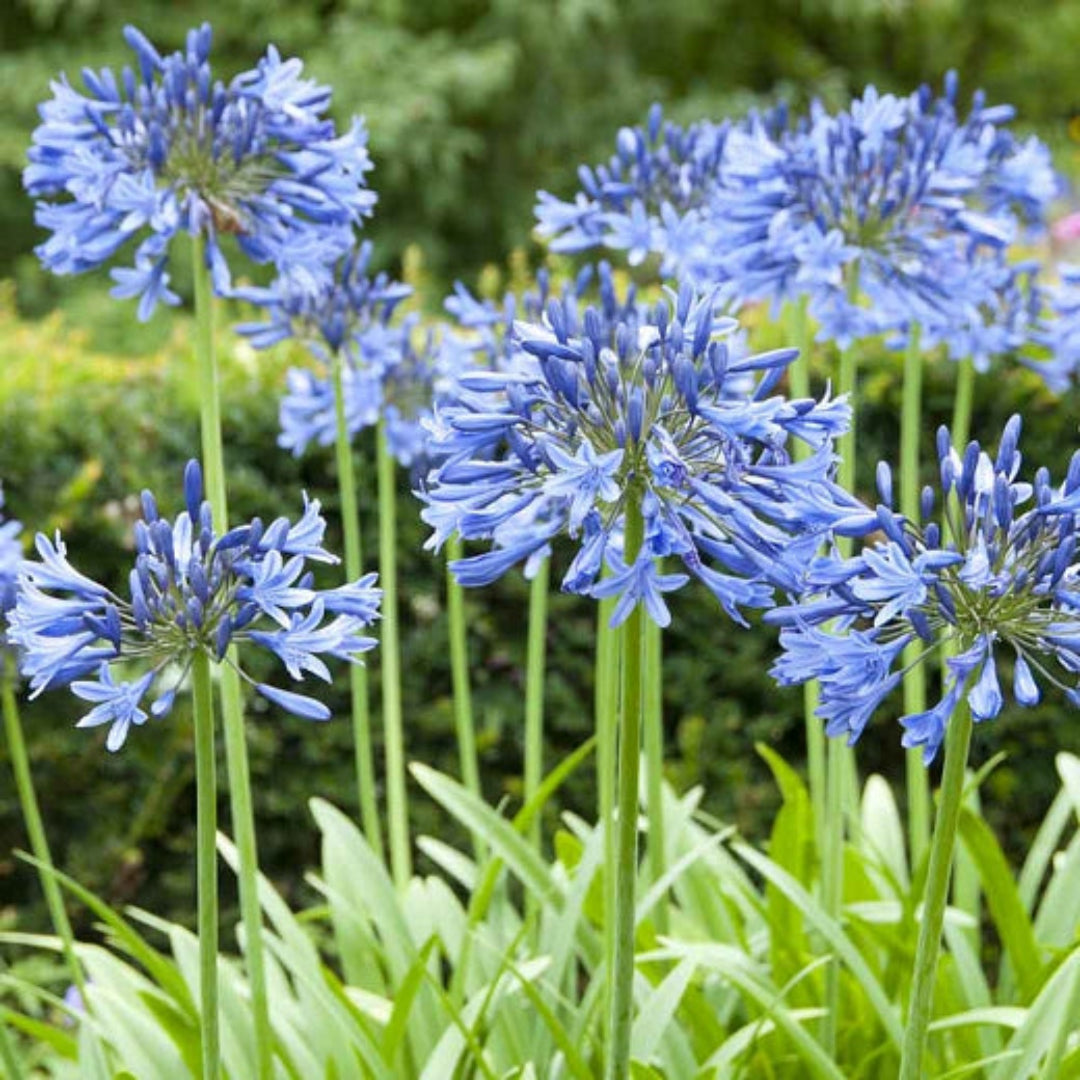Understanding the Art of Agapanthus Care: Important Actions for Healthy Growth and Dynamic Blossoms
In the world of horticulture, the growing of agapanthus stands as a rewarding venture for those that seek to nurture these sophisticated flowering plants. From selecting the appropriate variety to understanding trimming techniques, the trip towards cultivating flourishing agapanthus plants is multifaceted and holds the vital to unlocking the complete possibility of these herb treasures.

Picking the Right Agapanthus Variety

When choosing the best Agapanthus selection for your garden, consider variables such as climate viability, bloom shade, and growth behavior. Furthermore, consider the environment in your region to make sure the Agapanthus variety you pick can thrive in your specific problems. Understanding the development habit of various Agapanthus varieties is critical for appropriate positioning within your yard.
Perfect Growing Problems
Thinking about the optimal ecological needs is vital for effective Agapanthus farming. Agapanthus flourishes in well-draining dirt with a slightly acidic to neutral pH degree. When planting, select an area that gets complete sunlight to partial color. In hotter environments, offering some mid-day color can stop scorching of the fallen leaves. Agapanthus plants are sensitive to cool temperatures and should be safeguarded from frost throughout wintertime months.
To guarantee healthy development and vivid blossoms, plant Agapanthus light bulbs at a deepness of regarding 2-4 inches and space them 8-12 inches apart. Mulching around the base of the plants aids maintain dampness and reduces weed growth.
Watering and Fertilizing Tips
Keeping correct moisture levels and giving vital nutrients are crucial elements in the care regimen for Agapanthus plants. It is essential to strike a balance when it comes to watering Agapanthus. These plants like continually wet soil however are at risk to root rot if overwatered. Throughout the growing period, water deeply when a week, guaranteeing the dirt is well-draining to stop waterlogging. In hotter climates or throughout periods of drought, even more frequent watering might be necessary to maintain the dirt uniformly damp. Nevertheless, reduce watering in the winter to prevent water logged problems.
Feeding Agapanthus is vital for advertising healthy and balanced growth and respected flowers. Apply a well balanced plant food, such as a 10-10-10 formula, in the early spring as brand-new growth arises. Repeat this application every 6-8 weeks throughout the expanding season. Stay clear of too much fertilization, as it can cause lush vegetation at the cost of blooms. Constantly follow the maker's guidelines for correct dilution and application approaches. By adhering to these watering and fertilizing suggestions, you can guarantee your Agapanthus plants flourish and generate dynamic, lasting blooms.
Pruning Methods for Agapanthus
Trimming Agapanthus plants at the ideal times and with correct strategies is vital for preserving their health and promoting optimum development and flowering. The excellent time to trim Agapanthus is in late winter or very early springtime before new development emerges.
Deadheading invested blossoms can additionally redirect the plant's energy into generating more blooms rather than setting seeds. If you desire to Continue accumulate seeds for proliferation, leave some flowers to completely dry and mature on the plant.
Remember to make use of tidy, sharp tools to make accurate cuts and reduce the risk of presenting illness. Agapanthus. Regular trimming will certainly aid maintain your Agapanthus looking cool and healthy and balanced while making sure a bountiful screen of beautiful flowers
Taking Care Of Usual Pests and Illness
After making certain correct pruning strategies for Agapanthus, it is necessary to address common parasites and illness that can influence the wellness and vitality of these plants. One typical bug that impacts Agapanthus is the Agapanthus gall midge.
Another usual concern is fungal fallen leave spot, which presents as dark lesions on the fallen leaves. To stop fungal illness, make sure great air circulation around the plants, avoid overhanging watering, and remove any contaminated fallen leaves quickly. Additionally, Agapanthus plants can endure from origin rot if they are planted in inadequately draining pipes soil. To stop this, plant Agapanthus in well-draining dirt and avoid overwatering. By being alert and taking prompt activity against pests and conditions, you can aid your Agapanthus plants flourish and produce lively blooms.

Verdict
Finally, mastering the art of agapanthus care includes selecting the best range, offering suitable growing problems, appropriate watering and fertilizing, suitable trimming techniques, and resolving typical insects and diseases. By complying with these essential steps, you can make sure healthy i thought about this and balanced growth and lively blossoms for your agapanthus plants. Keep in mind to regularly keep an eye on and preserve your plants to promote their total wellness and durability.
To ensure healthy click for more growth and vivid blooms, plant Agapanthus bulbs at a deepness of concerning 2-4 inches and area them 8-12 inches apart. By following these watering and feeding pointers, you can ensure your Agapanthus plants thrive and generate lively, lasting blossoms.
One typical insect that influences Agapanthus is the Agapanthus gall midget. Additionally, Agapanthus plants can endure from root rot if they are grown in improperly draining dirt. By following these essential actions, you can guarantee healthy and balanced development and vibrant flowers for your agapanthus plants.